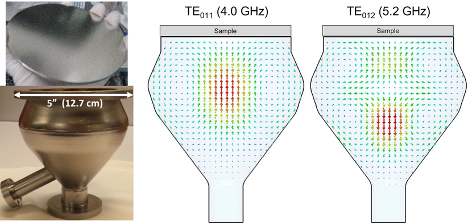Studies of Au/Nb bilayers for improving and understanding superconducting RF cavities
The most relevant metric of the study is the surface resistance. This is a quantity related to the dissipation of energy as electromagnetic fields interact with a metallic surface. It was found that the surface resistance was reduced from the baseline (niobium with its native oxide unchanged) following the initial gold deposition. This indicates that the oxide is playing a nontrivial role in the surface resistance of niobium. Adding more gold to the surface following this initial measurement increased the surface resistance, which was expected. Interestingly, it was found that the dependence on electromagnetic field amplitude was independent from the amount of gold introduced.
The technological goal for accelerator applications is to minimize the surface resistance, while scientifically it is of interest to try to understand how it changes for different temperatures and electromagnetic field frequencies and amplitudes for a given material. By measuring how the surface resistance changed following the introduction of gold to the niobium surface, this study suggests both a path for potential technological innovation and adds to the understanding of relevant dissipation mechanisms.
Reference:
T. Oseroff, Z. Sun, and M. Liepe, “Measurements of the amplitude-dependent microwave surface resistance of an Au/Nb bilayer,” Supercond. Sci. Technol., 2023, doi: 10.1088/1361-6668/acf88d. Available: http://iopscience.iop.org/article/10.1088/1361-6668/acf88d

